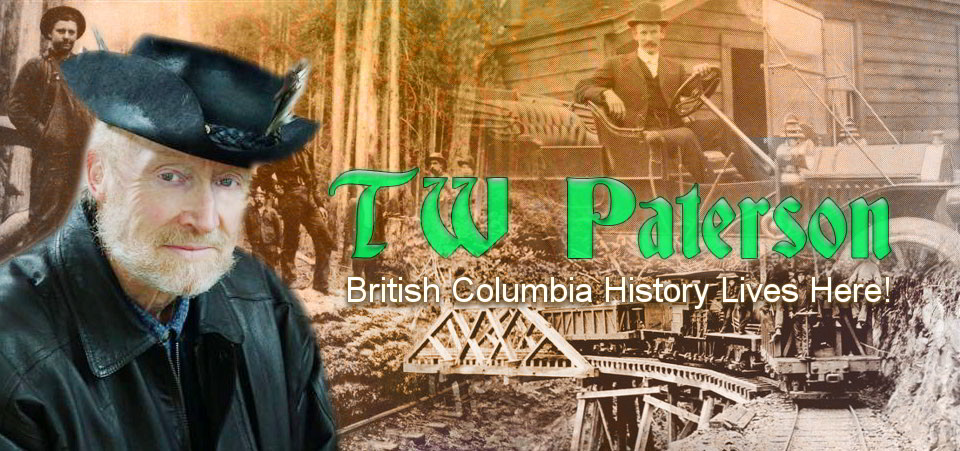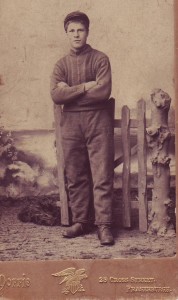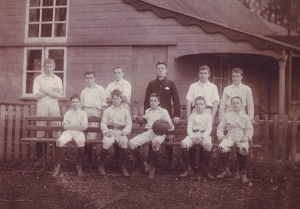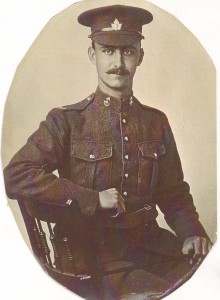Old Family Photos Cry Out to You
You see them all the time. At garage sales, flea markets and thrift stores, they stare back at you from over the years.
How do these family photos, so very personal and, you would think, once so meaningful to their owners, find their way to a sales table?
Who was he?
For the prospective buyer, usually a collector of what’s fancifully termed ephemera, the thrill of the hunt can be dampened by a nagging sense of guilt. These were real people whose private lives so painfully preserved in family albums are now bared to the prying eyes of strangers–you!
It’s an invasion of privacy
They should be tucked safely away for family posterity. Instead, there they are for the world to see, jumbled in a box, sometimes still framed, or in their original albums.
It’s a moral dilemma that has posed itself more than once to me, an ardent collector and flea market veteran. What began as a practical consideration (old photos are great for illustrating newspaper and magazine articles) first took a subtle turn in the ‘70s when two photos which accompanied an article about garage sale treasures in the magazine section of the Victoria Colonist were claimed by family members.
The first to phone was a man who said he was calling on behalf of an elderly, ailing mother of a young boy shown on a large wooden locomotive, obviously in a studio setting. He expressed outrage that the picture had found its way to a thrift store. It never should have left the family, he said, the lad in the picture having later joined the navy and been killed in the Second World War. The caller had his suspicions as to how this priceless family treasure had strayed but he declined to elaborate.
The second caller was more upbeat. Did I know that her brother, by then city solicitor, was the boy in the photo taken by the late Capt. E.G. Beaumont during their round-the-world tour in the 1920s? I hadn’t but, so informed, was pleased to turn them over to her brother.
I’ve been able to return some photos
At least once a batch of family photos found their way back to rightful owners without having to appear in print. Purchased at a Cobble Hill flea market for all of $3, they covered several generations, the most recent being of a 1940s airman and his bride. Only the oldest, brown with age, bore a name on the back.
Another flea market seller thought she recognized the young bride as a former neighbour from years before. She thought she’d moved to Crofton.
As indeed she had. Six years later, remembering the 1992 conversation at the flea market, I looked in the phone book. There was one name listed with the same spelling. The woman who answered my impulse call was taken by surprise but readily identified the photos over the phone. She thought it likely that they’d belonged to her late husband’s parents who’d passed away years before and she was eager to take them back and have them copied for her two married daughters.
This photo was a heartbreaker
A box of photographs at a Shawnigan Lake garage sale included one of a First World War soldier, probably taken in his garden immediately before he shipped overseas. And so it proved when the late Bob Dougan, a neighbour and second generation local historian, identified Pte. James Thomson Jeffrey. He was killed two weeks before Armistice while serving with the 72nd Battalion, Seaforth Highlanders, and his name is on the Cobble Hill and Duncan cenotaphs.
A batch of photos at a Chemainus antique mall defied the laws of probability in that each and every one of them was identified on the back by family name and Ontario community of origin. There really ought to be a law that photos are identified and dated!
A box tucked under a table at a Duncan flea market yielded a sepia-toned photo of a basketball team, posed before a cute cottage and looking very much as if it was taken about the turn of the last century. Remarkably, it bears the faint penciled legend, Victoria High School, 1911.
These are exceptions. Usually, old photos (other than classroom shots) are unidentified other than by, perhaps, the photographer’s studio imprint and community. A great number of these so-called studio, or cabinet portraits, at least those I’ve found over the years, seem to be from Ontario or England.
Perhaps there’s something vaguely appropriate in their anonymity after all. Lost in a sea of other old photos and relegated to being just a commodity–something, surely, that their forgotten models never foresaw–they, unlike the rare exceptions of the photos noted above, can never “go home.”
Who were they?
You look at them and wonder: Who were they? Whatever became of them? For the most part, alas, their stories go untold.
But not always, and I’m not the only one who rescues and, sometimes, returns photos. When the Times-Colonist published the photo of a boy on a century-old postcard with a melancholy note to Santa Claus on the back, readers quickly identified Charles Wilson. A boy when he penned the card from Lethbridge, Alta. in 1920, he was sad because it was the family’s first Christmas apart from the father who was in Victoria.
John Roberts, who took the postcard to the T-C, was overwhelmed by the response from readers who identified Charles Wilson, an accountant who grew up in Cadboro Bay before his family moved to Beach Drive. By then, of course, he, his mother Janet and his father Ernest C. Wilson, a civil engineer, had long been reunited. Wilson Sr. had been house hunting in Victoria, at the time of son Charlie’s letter to Santa.
This isn’t the first time that Roberts was able to reunite old photos with their owners or their owners’ descendants, some as far distant as England and Austria. At last report, he was in contact with a family about two albums filled with 482 postcards. He described his sleuthing efforts as “a winter hobby”.




I recently moved to Wharncliffe Rd in Duncan. Across the road is an abandoned house, circa 1920-30s. It appears to be perhaps the original farmhouse of the area. Sadly the owners have walked away from it and it is now going to ruin. I am wondering if there is anyway to trace it or find out the history through the city hall archives. From speaking to neighbours in the area I hear that the bank may simply demolish it and that would be a shame if it has significant historical connections to the area. The address is 753 Wharncliffe Rd. Thank you. I really enjoy your books and articles. Sincerely. Emmett Finnegan
Hi, Emmett: I’ve been meaning to check out this address for several weeks but forgot. I know which house on Wharncliffe was that of the Hoey family but don’t know the street number.
Maj. Charles Hoey, if you don’t already know, is the Cowichan Valley’s only holder of the Victoria Cross, issued posthumously for his attack on a Japanese gun emplacement during the Second World War. Hoey Park, the strip of grass beside Duncan’s railway station is named for him.
And, lest we forget, his brother, Trevor, also was killed in the war, while serving in France not only after D-Day.
If this is the Hoey house I’ll have more–much more!–to say on the subject. Stay tuned. –TWP
Please let me know of any info. you find on the 745 Wharncliffe Road home.
Sorry, Karen, that I just found this… I’ve written extensively about 745 Wharncliffe and Maj. Charles Hoey,VC, in my weekly historical column in the Cowichan Valley Citizen. You can find my post on Hoey elsewhere on this website.
Last I heard, 745 Wharncliffe was still for sale; hope it finds a loving owner not a developer which is the more likely scenario, I’m afraid. –TWP
Sir,
Do you still have the photo of Pte. James Thomson Jeffrey? If so, can you get in touch? We would like a high quality scan of it for the Seaforth Highlanders archives.
Cheers,
James
Hi, James: Yes, I have Pte. Jeffrey’s photo and I’d be pleased to provide you with a copy for the Seaforth Highlanders archives.
It’s in storage at the moment and you’ll have to allow me time to dig it out…
The copy of Cowichan Goes to War, 1914-1918 will go in the post asap, hopefully tomorrow.
In looking at my book, I was astounded to see that I omitted to use his photo and tell the story of how I found it at a local garage sale! This is the result of being so close to the trees to see the forest (or is it the other way round?) when I was rushing to get the book to the printer.
Something to correct for the next reprinting.
Pte. James Thomson Jeffrey is commemorated on both the Cobble Hill and the Duncan Cenotaphs, by the way. He’s one of the many Cowichan Valley young men who answered the call to King and Country and gave their all; in his case, he died within six weeks of Armistice. How sad.–TWP